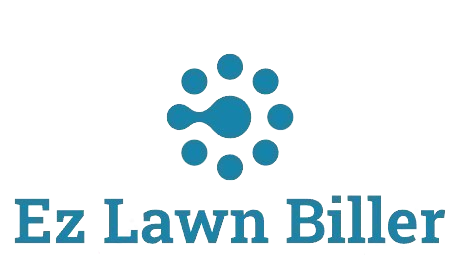How to Optimize Routes for Your Lawn Care Business
Optimizing routes for your lawn care business is crucial for improving efficiency, reducing operational costs, and enhancing customer satisfaction. Effective route planning allows you to manage your time better, reduce fuel expenses, and ensure timely service delivery. In this blog post, we will explore various strategies to optimize your routes, discuss the importance of efficient route management, and introduce tools that can help you streamline your processes.
With the increasing demand for lawn care services, it’s more important than ever to operate efficiently. By optimizing your routes, you can increase the number of jobs completed each day and maximize your revenue potential. We will dive into practical methods, technologies, and best practices that lawn care businesses can implement to improve their routing efficiency. Whether you are a small independent landscaper or managing a larger lawn care service, this post is designed to provide valuable insights to enhance your operations.
Understanding the Importance of Route Optimization
Route optimization is the process of determining the most efficient path for service delivery. In the lawn care industry, this means planning your daily routes to minimize travel time and fuel consumption. According to a study, businesses that optimize their delivery routes can save up to 20% on fuel costs and significantly reduce overtime expenses.
Moreover, effective route management enhances customer satisfaction. Timely service delivery is crucial in maintaining a positive relationship with clients. When your team arrives punctually for scheduled maintenance, it reinforces reliability and professionalism. This not only improves client retention but can lead to referrals, expanding your clientele base.
For instance, a lawn care business operating in a suburban area with numerous clients can benefit immensely from route optimization. By grouping jobs geographically, the company can reduce travel time between jobs, allowing technicians to complete more services in a day. This leads to improved productivity and a happier workforce.
Utilizing Technology for Route Optimization
In today’s digital age, technology plays a vital role in optimizing business operations. Various software solutions are available that can help lawn care businesses streamline their routing processes. For example, lawn billing software often includes route optimization features that automatically calculate the most efficient paths for technicians.
One such solution is the [Lawn Biller Software](https://ezlawnbiller.com/), which allows users to input client addresses and generate optimized routes with minimal effort. This not only saves time but also minimizes the potential for errors in manual planning. Furthermore, these software tools can help in tracking service history and client preferences, making it easier for lawn care providers to tailor their services and improve customer relations.
Another essential tool is GPS navigation systems. Many lawn care businesses have started using GPS devices or mobile applications that provide real-time traffic updates and route suggestions. This allows technicians to make informed decisions while on the road, avoiding traffic jams and road closures, thus enhancing overall efficiency.
Best Practices for Route Optimization
While technology offers great tools for route optimization, there are also best practices that businesses should adopt for achieving optimal results. First and foremost, analyzing data from previous jobs can provide valuable insights into workflow patterns. Understanding peak traffic times, seasonal demand, and client locations can help in planning more effective routes.
Secondly, consider implementing a flexible scheduling system. Having the ability to adjust appointments based on weather conditions or other unforeseen circumstances can significantly enhance route efficiency. For instance, if rain is forecasted, rescheduling lawn mowing jobs to earlier in the day can help ensure consistent service delivery.
Lastly, maintain open communication with your team. Regular check-ins can help identify any issues faced on the road, enabling quick resolutions. Whether through a messaging app or scheduled meetings, fostering a culture of communication can enhance route management and overall business efficiency.
Case Studies: Successful Route Optimization
To further illustrate the benefits of route optimization, let’s look at a few case studies from lawn care businesses that have successfully implemented these strategies. One small lawn care company in Denver, Colorado, adopted an automated route planning software that integrated with their existing client management system. Within three months, they reported a 30% reduction in fuel costs and a 25% increase in the number of jobs completed. Their customer satisfaction ratings also improved, as clients appreciated their timely service.
Similarly, a larger lawn maintenance company in Chicago, Illinois, utilized GPS tracking and route optimization tools. They were able to monitor their fleet in real-time, making adjustments on the fly based on traffic conditions. This adaptability allowed them to maintain a high level of service during peak seasons, resulting in a 40% increase in client retention rates.
These examples showcase how investing in technology and adopting best practices in route optimization can yield significant benefits. As the lawn care industry continues to grow, businesses must stay competitive by maximizing efficiency and maintaining high service standards.
The Role of Client Management in Route Optimization
Effective client management is an integral part of route optimization. Understanding your clients’ preferences, service history, and frequency of service can help in planning efficient routes. For example, if a client prefers morning service and lives near other clients who have similar preferences, scheduling their services together can streamline operations.
Utilizing a comprehensive lawn service software can enhance client management. Features such as service reminders, preferences tracking, and history logs can help you keep track of individual client needs. This not only aids in route planning but also fosters a strong relationship between the business and its clients, as they feel valued and understood.
Moreover, with a dedicated lawn service app, clients can directly communicate their needs or reschedule appointments. This flexibility allows lawn care providers to adapt their routes dynamically, ensuring that client satisfaction remains a priority while still optimizing operational efficiency.
Implementing a Feedback Loop
Once you have established an optimized routing system, it’s essential to implement a feedback loop. Encourage your team to share their experiences regarding the routing and scheduling processes. Gathering input from technicians can provide insights into inefficiencies or areas for improvement.
Additionally, client feedback is invaluable. After service completion, consider sending follow-up surveys to assess client satisfaction with the service and timeliness. This information can help refine route planning further and adjust to changing client needs over time.
By continually analyzing both internal and external feedback, you can make informed decisions that enhance your route optimization strategies. This proactive approach not only contributes to operational efficiency but also strengthens customer loyalty, which is vital for long-term success in the lawn care industry.
Conclusion
In conclusion, optimizing routes for your lawn care business is a critical component of operational success. By leveraging technology, adopting best practices, and maintaining strong client management, your business can save time, reduce costs, and improve customer satisfaction.
As the lawn care industry continues to evolve, staying ahead of the competition means continually assessing and improving your processes. Investing in tools like [Lawn Biller Software](https://ezlawnbiller.com/) can facilitate this journey, providing the necessary resources to streamline your operations.
Embrace the importance of route optimization and implement the strategies discussed in this post. With dedicated efforts, your lawn care business can thrive, ultimately leading to greater profitability and a loyal client base. Start optimizing your routes today for a more efficient and productive tomorrow!




